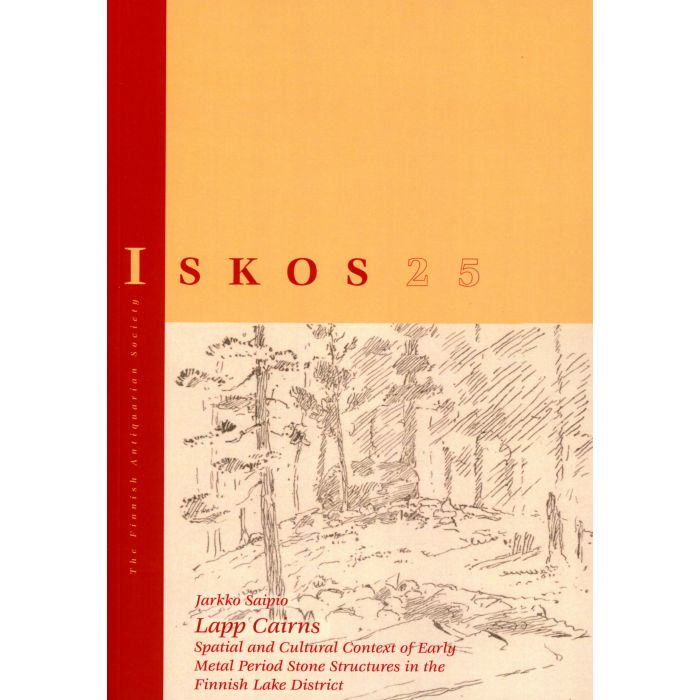Käytämme evästeitä parantaaksemme käyttäjäkokemustasi. Noudattaaksemme uutta sähköisen viestinnän yksityisyysdirektiiviä, meidän täytyy pyytää sinulta lupaa evästeiden asettamiseen. Lue lisää.
Lapp Cairns
30,00 €
Varastossa
Vain 2 jäljellä
SKU
978-952-6655-35-2
Saipio, Jarkko
Lapp Cairns. Spatial and Cultural Context of Early Metal Period Stone Structures in the Finnish Lake District
Suomen Muinaismuistoyhdistys
Iskos 25
Tampere 2023, 532 pp.
Lapp Cairns. Spatial and Cultural Context of Early Metal Period Stone Structures in the Finnish Lake District
Suomen Muinaismuistoyhdistys
Iskos 25
Tampere 2023, 532 pp.
This doctoral project is a comprehensive study of Early Metal Period (c. 1900 BCE–300 CE) ritual/burial cairns in the Finnish Lake District, known as ‘Lapp cairns’. In this study, the Lake District includes Central Finland, North Savo, South Savo, North Karelia, South Karelia, Pirkanmaa, Kanta-Häme, Päijät-Häme and northern Kymenlaakso. Lapp cairns are typically located on elevated bedrock sites along lakeshores. Their diameter is usually 3–10 m, at a height of 0.3–0.7 m. The most typical Lapp cairn find contains a small amount of burnt human bone, but it is not present in all Lapp cairns. Other finds include quartz and flint flakes, animal bone and occasional metal or stone objects.
Lapp cairns resemble contemporary cairns in coastal Finland but are surrounded by dwelling sites, suggesting mobile fisher-huntergatherer lifeways, in contrast to more sedentary and agricultural life around the coastal cairns. Early Metal Period cairn building in the Lake District is still a poorly understood phenomenon. Of the several hundred probable or attested Lapp cairns known in the area, only some 20 were excavated before this study, and the excavations revealed intriguing differences between the cairns. Therefore, the main research questions of this study target the very basics of the Lapp cairn phenomenon. When, why and who adopted cairn building in the Lake District? How did the cairns relate to the natural and cultural landscape around them? What was common to all Lapp cairns as ritual sites, and what kind of ritual variation existed between them? Were there temporal or regional developments in the Lapp cairn tradition?
Lapp cairns resemble contemporary cairns in coastal Finland but are surrounded by dwelling sites, suggesting mobile fisher-huntergatherer lifeways, in contrast to more sedentary and agricultural life around the coastal cairns. Early Metal Period cairn building in the Lake District is still a poorly understood phenomenon. Of the several hundred probable or attested Lapp cairns known in the area, only some 20 were excavated before this study, and the excavations revealed intriguing differences between the cairns. Therefore, the main research questions of this study target the very basics of the Lapp cairn phenomenon. When, why and who adopted cairn building in the Lake District? How did the cairns relate to the natural and cultural landscape around them? What was common to all Lapp cairns as ritual sites, and what kind of ritual variation existed between them? Were there temporal or regional developments in the Lapp cairn tradition?
| Kustantaja | Suomen Muinaismuistoyhdistys |
|---|---|
| ISBN | 978-952-6655-35-2 |
| ISSN | 0355-3108 |
| Sarja | Iskos |
| Painovuosi | 2023 |
| Julkaisun kansi | Pehmeäkantinen |
| Sidontatapa | Nidottu |
| Kielet | englanti |
| Tieteenalat | Arkeologia, Historia |


